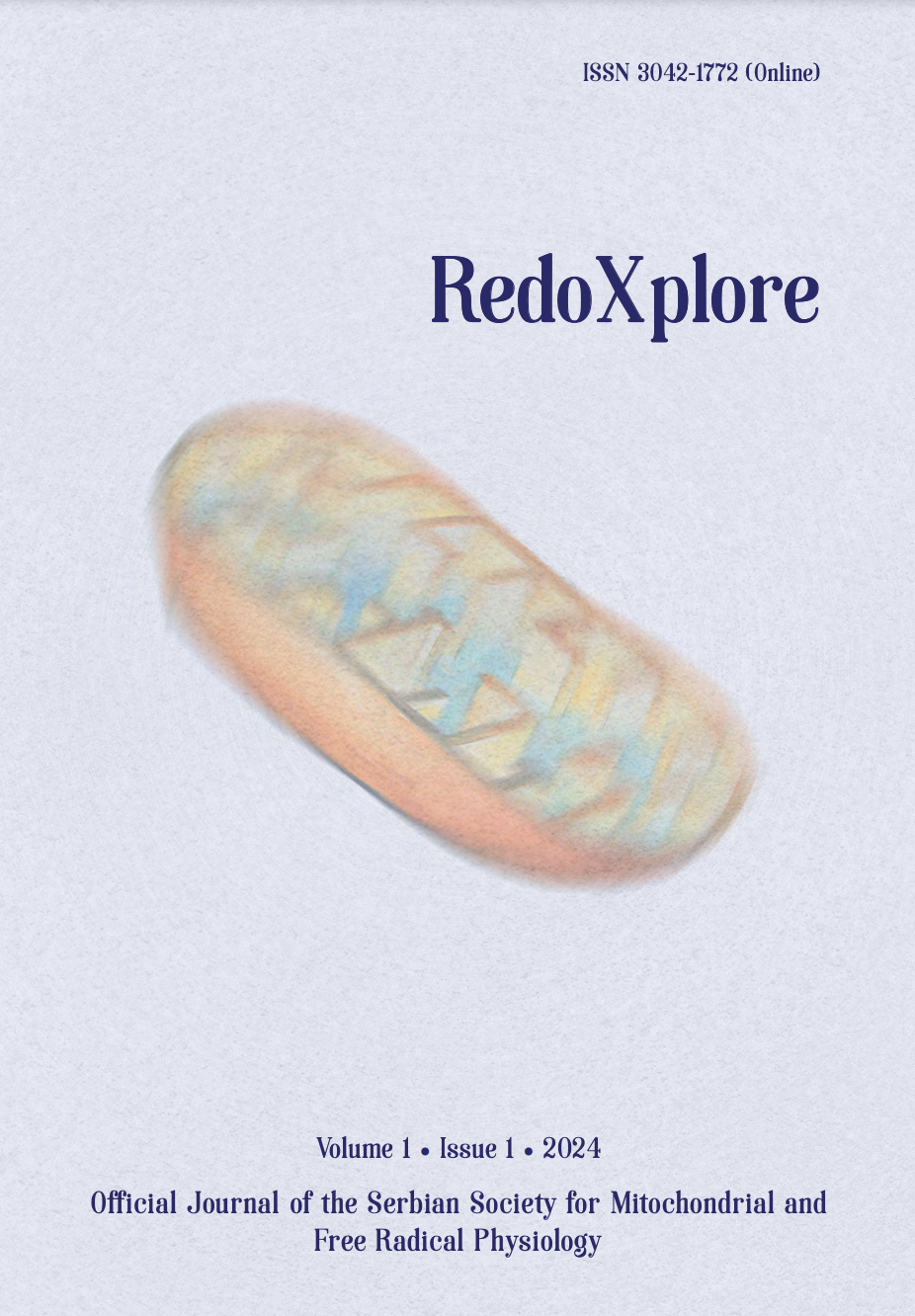
More articles from Volume 1, Issue 1, 2024
REDOX AND METABOLIC REPROGRAMMING OF BREAST CANCER CELLS AND ASSOCIATED ADIPOSE TISSUE - THE CORNERSTONES OF ADAPTIVE TUMOUR BEHAVIOUR
INSULIN MODULATES MITOCHONDRIAL STRUCTURAL AND FUNCTIONAL MOSAICISM IN BROWN ADIPOCYTES
NITRITE MITIGATES OXIDATIVE BURST IN ISCHEMIA/REPERFUSION IN BRAIN SLICES
NITRIC OXIDE, SUPEROXIDE AND PEROXYNITRITE – REDOX REGULATION OF THE CARDIOVASCULAR SYSTEM BY NITRO-OXIDATIVE STRESS AND S-NITROS(YL)ATION
DIETARY NITRATE AS PIVOT ON THE GUT MICROBIOTA-HOST REDOX COMMUNICATION
IS REDOX-HYPERACTIVITY IN EXTREMOPHILIC MICROALGAE LINKED TO THEIR INCREASED METABOLIC BURDEN?
Faculty of Physical Chemistry, University of Belgrade , Belgrade , Serbia
Department of Life Sciences, Institute for Multidisciplinary Research, University of Belgrade , Belgrade , Serbia
Department of Life Sciences, Institute for Multidisciplinary Research, University of Belgrade , Belgrade , Serbia
Department of Life Sciences, Institute for Multidisciplinary Research,, University of Belgrade , Belgrade , Serbia
Faculty of Physical Chemistry, University of Belgrade , Belgrade , Serbia
Editor: Bato Korac
Published: 29.08.2024.
Selected oral presentations
Volume 1, Issue 1 (2024)
Abstract
The diverse uses of microalgae in ecological remediation, wastewater treatment, pharmaceutics, or food and biofuel production, have long kept these single-celled organisms in the spotlight. The focus of this study was on Chlamydomonas acidophila strain PM01, which thrives in acidic aquatic systems and is resistant to the presence of heavy metals in its environment. The redox metabolism of this microalga was assessed by its ability to reduce the EPR-active spin probe TEMPO (2,2,6,6-tetramethylpiperidine-1-oxyl), and compared to that of Chlorella sorokiniana strain CCAP 211/8K, a freshwater green microalga. The results showed that C. acidophila has a faster redox metabolic rate than C. sorokiniana, reducing 50% of TEMPO after 2.5, and 13 min, respectively. The addition of Mn2+ or Fe3+ to the culture medium of C. acidophila did not affect its reduction capacity, while it had a minor effect on C. sorokiniana. The faster rate in C. acidophila most likely represents the result of its adaptation to acidic environments. Namely, it has previously been suggested that acidophilic algae perform energy-demanding cellular processes in order to cope with the high pH gradient across the membrane. Moreover, the increased metabolic turnover requires an increased mitochondrial activity, resulting in a higher baseline production of superoxide and hydrogen-peroxide, subsequently compensated by an elevated baseline reduction capacity. Interestingly, the redox metabolic rate of C. sorokiniana was unaltered in suspensions that were kept in non-standard cultivation conditions (diurnal fluctuations of temperature and ambient lighting, absence of shaking) for five weeks. However, C. acidophila lost all of its reduction capacity in these conditions already after three days. These findings may be important when selecting the most appropriate microalgal strain for a specific application. Specifically, C. acidophila would likely be a good candidate for high-yield rapid production of endogenous products that are the result of its unique survival mechanism under extreme conditions.
Citation
Copyright

This work is licensed under a Creative Commons Attribution-NonCommercial-ShareAlike 4.0 International License.
Article metrics
The statements, opinions and data contained in the journal are solely those of the individual authors and contributors and not of the publisher and the editor(s). We stay neutral with regard to jurisdictional claims in published maps and institutional affiliations.






